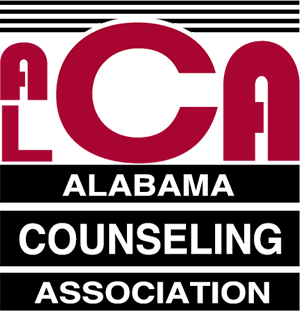ALCA History
ALCA researched and written by Dr. Ervin L. (Chip) Wood | June 27, 2013
The Alabama Counseling Association had its inception on January 24, 1954, as the Alabama Guidance Association, a locally organized autonomous group. In 1964, at its state convention at the Dinkler/Tutwiler Hotel in Birmingham a national affiliation was discussed. With those questions as impetus, then President Wilbur Tincher appointed a committee of seven individuals to pursue national affiliation. Members of the committee were Chairman W. Harold Grant, Myrtle J. Ausley, Claudia Hardee, Noreen S. Oden, Ralph M. Roberts, and Elaine Webster.
A new constitution, aligning the state organization with the American Personnel and Guidance Association (APGA), was presented at the 1966 state meeting in Montgomery. In an open letter to the membership dated February 14, 1966, a formal recommendation was made that the organization affiliate with APGA. This move was approved by the membership and in November, 1967, at the national convention of APGA in Dallas, Texas, a charter for affiliation was presented to the Alabama membership. An interesting aside to the history is that there has been one dissertation written on the history of the Association. This dissertation was written by William Bennett Ware in fulfillment of the requirements of a Doctor of Education at Auburn University. The Chair of the Dissertation committee was Dr Hugh H. Donnan a leader of the counseling profession in Alabama and later an association president. Other members of the Committee were M. E. Meadows, R. G. Eaves, W. J. Valiene, and Paul Parks as Dean of the Graduate School.
The ALPGA was incorporated on January 27, 1968, in Jefferson County, Alabama. The official registering agent was Reba Clark from Birmingham. The incorporation document including signatures is about four pages long. The association was first granted IRS 501(c)(3) nonprofit, tax-exempt status on March 23, 1988.
One of the early actions of the Association was to conduct a membership survey to determine who a typical ALPGA member was. That survey in 1972-73 indicated that a typical ALPGA member was a white female, 39 years of age, with less than five years of tenure in the association. A master's degree was the highest predominant degree.
Interestingly, the Alabama Counseling Association was one of the few organizations that did not have to integrate at the time the integration movement hit most of the professional organizations in the South and nationally. It was from the beginning an organization open to all members and always took people regardless of race. There was not a separate organization for African-Americans and whites. This was very forward thinking and in keeping with the philosophy of most of the counseling profession.
The first Quarterly of the Association was, of course, cited as Volume I, Number I, and it was published Fall, 1964. A copy of that issue is available for review in the Counseling Association office. The first editor was Reba Clark.
The first chapter of the Alabama branch was called District V which was Jefferson and Shelby County. Peter McCarthy was the first president. The old districts paralleled the AEA districts because our predecessor, the Alabama Guidance Association, was originally affiliated with AEA and actually received funds from AEA until it became affiliated with APGA.
AEA changed districts in 1969 and what was District V became District IV. A number of years later the term changed from districts to chapters. Today there are nine chapters.
The first division for the Association was ALCPA (college counselors) which was founded in April,1969. AlSCA (school) was founded on March 20, 1970, as the second group. Today there are thirteen divisions.
From a financial standpoint, one of the interesting notes is the fact that the Association first began operations in 1954 with a $100 grant from AEA. In 1967, the year that they affiliated with APGA the budget was $2,000. In 1995-96, the budget was $205,000. Today the budget is nearly $250,000.
On November 18, 1983, the general session of ALPGA voted to change its name to the Alabama Association for Counseling and Development in compliance with the national association's change to that title. In its business session at its 25th annual workshop in 1992 in Huntsville, the state organization again changed its name to the Alabama Counseling Association to coincide with the national affiliate name, the American Counseling Association.
Items of historical interest were the early objectives of the Association. These included:
In 1954 when the Alabama Guidance Association was formed, one of its priorities was to develop some sort of certification system for guidance counselors in the state of Alabama. This requirement was added to the Alabama Code in 1975.
In 1966, when the APGA was formed one of the priorities was to establish a state office with an executive secretary. It took twenty years from 1966 to 1986 to bring the vision of a state office and an executive secretary to fruition. That occurred in 1986 when the Association's office was established at Auburn University with Dr. Wilbur Tincher, the first president of APGA, as our first executive secretary. Dr. Chip Wood took over in January, 1992, following Wilbur's retirement. The office was moved to
Livingston University (now UWA) and sufficient organization was applied to the situation to give ALCA more-or -less a full-time staff utilizing Dr. Wood, his secretary, graduate students, student workers, and other support from the staff. Dr. Wood retired from UWA in 2000 and he and his wife Lin (the real professional counselor in the family) moved the office off-campus and assumed responsibility for its operation.
A third early priority was the establishment of a professional licensure law - the purpose of which would be to insure competent, well-trained LPCs in the state. This law with ALCA’s strong support was enacted on July 18, 1979.
A later priority was the establishment of expectations for elementary school counselors. This came later but was accomplished during the 1980s with a strong grassroots effort and support from ALSDE.
The concept of awards for ALPGA was begun in 1969 and, it has grown as the Association has grown. Chapter awards were established in 1973 at the fall workshop.
An activity which has enhanced the efficiency of ALCA is the spring officers and committee chairpersons workshop. In the beginning it was held annually at Ann Jordan Farm at Alexander City and lasted two or three days. The first one was held on May 1-3, 1969, with President John C. Seymour. Ann Jordan Farms, a UA facility, was closed during the 1980s. At that point the retreat moved to the 4H Center and has now met there for the last 30 years or so.
The Association has enjoyed a remarkable growth and success over the years of its 59 year history. Today it has a total membership of approximately 2,000 members spread among nine chapters and 13 divisions. As noted, the budget this year will be over $240,000. The Association's offerings include a full-time state office, an organized, highly respected governmental relations effort, a quality annual professional development conference, and numerous other services. Each of the annual meetings includes nationally known keynote speakers and content sessions. There is also a variety of other professional opportunities including an on-going series of chapter and division professional training activities.
Today the ALCA still runs very much as a volunteer membership organization. The state office serves as a central organizing point for activities. It is a technologically equipped center that coordinates the efforts of our 2000 member volunteers.
|






